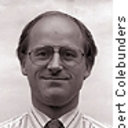Clinical characteristics of onchocerciasis-associated epilepsy in villages in Maridi County, Republic of South Sudan.
Palabras clave
Abstracto
OBJECTIVE
To describe the clinical manifestations of persons with epilepsy (PWE) in onchocerciasis endemic villages in South Sudan.
METHODS
During a survey in Maridi County in May 2018, PWE were interviewed and examined in their households by a clinical officer or medical doctor. Onchocerciasis-associated epilepsy (OAE) was defined as ≥2 seizures without any obvious cause, starting between the ages of 3-18 years in previously healthy persons who had resided for at least 3 years in the onchocerciasis endemic area.
RESULTS
Seven hundred and thirty-six PWE were included in the study; 315 (42.8%) were females; median age was 18 years. A variety of seizure types were reported: generalized tonic-clonic seizures in 511 PWE (69.4%), absences in 15 (2.0%), focal motor seizures with full awareness in 7 (1.0%), focal motor seizures with impaired awareness in 25 (3.4%), brief episodes of hallucinations in 316 (43.9%) and nodding seizures in 335 (45.5%). The median age of onset of all seizures was 10 years, and 8 years for nodding seizures. PWE with nodding seizures presented with more cognitive disabilities. The diagnostic criteria for OAE were met by 414 (85.2%) of the 486 PWE with complete information. Eighty (11.0%) PWE presented with Nakalanga features. Only 378 (51.4%) PWE were taking anti-epileptic treatment.
CONCLUSIONS
PWE presented with a wide spectrum of seizures. The high percentage of PWE who met the diagnostic criteria for OAE suggests that better onchocerciasis control could prevent new cases. Urgent action is needed to close the anti-epileptic treatment gap.


